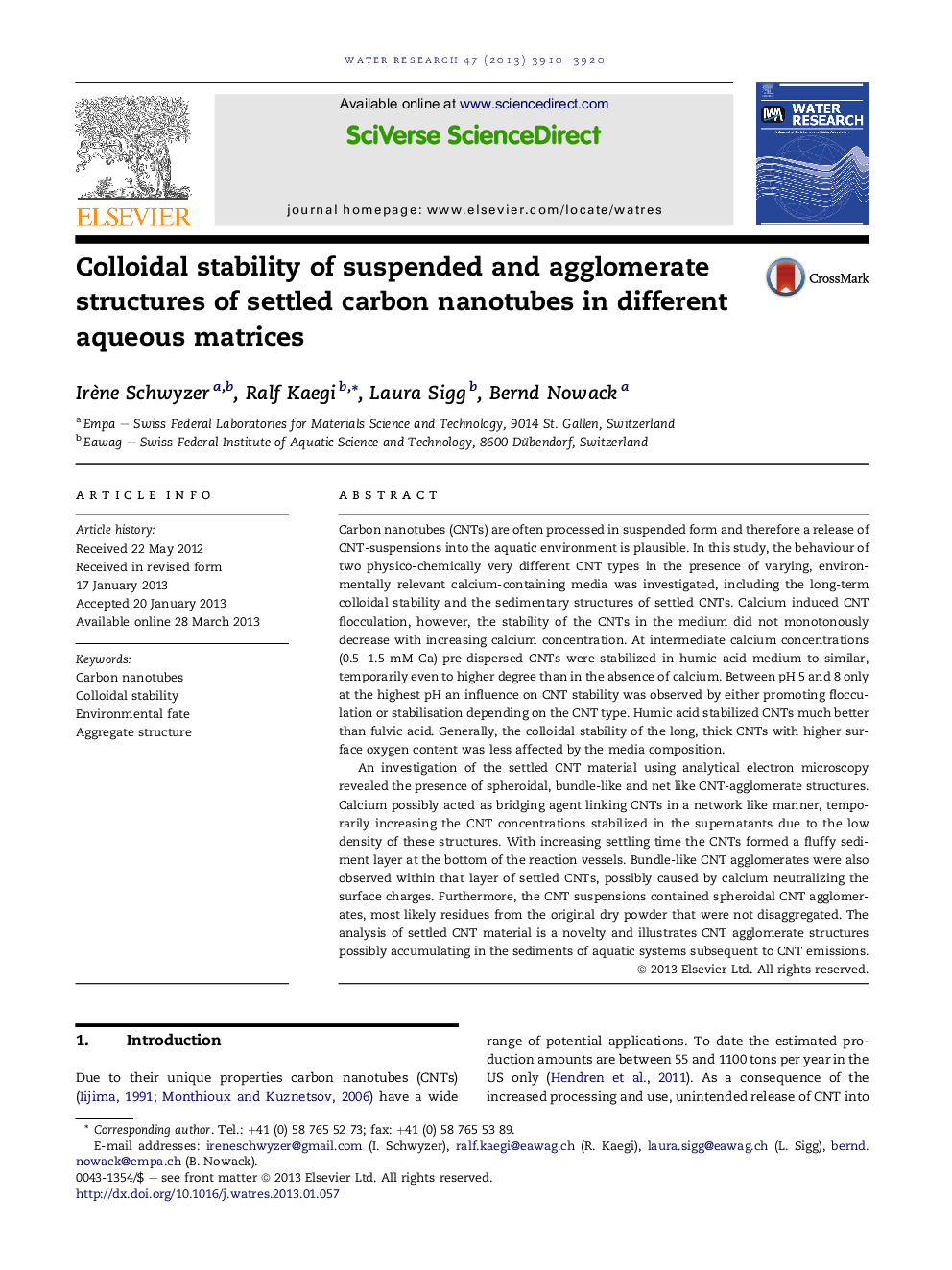| Article ID | Journal | Published Year | Pages | File Type |
|---|---|---|---|---|
| 4481761 | Water Research | 2013 | 11 Pages |
•The colloidal stability of two physico-chemically different CNT types was analysed.•Physico-chemical properties of CNTs can enhance their colloidal stabilities in various media.•Calcium at 0.5–1.5 mM temporarily increases the amount of CNTs in SRHA-media.•Spheroidal, bundle-like and net-like CNT-agglomerate structures were identified in settled material.•Formation of similar CNT-agglomerate structures following CNT emission is likely.
Carbon nanotubes (CNTs) are often processed in suspended form and therefore a release of CNT-suspensions into the aquatic environment is plausible. In this study, the behaviour of two physico-chemically very different CNT types in the presence of varying, environmentally relevant calcium-containing media was investigated, including the long-term colloidal stability and the sedimentary structures of settled CNTs. Calcium induced CNT flocculation, however, the stability of the CNTs in the medium did not monotonously decrease with increasing calcium concentration. At intermediate calcium concentrations (0.5–1.5 mM Ca) pre-dispersed CNTs were stabilized in humic acid medium to similar, temporarily even to higher degree than in the absence of calcium. Between pH 5 and 8 only at the highest pH an influence on CNT stability was observed by either promoting flocculation or stabilisation depending on the CNT type. Humic acid stabilized CNTs much better than fulvic acid. Generally, the colloidal stability of the long, thick CNTs with higher surface oxygen content was less affected by the media composition.An investigation of the settled CNT material using analytical electron microscopy revealed the presence of spheroidal, bundle-like and net like CNT-agglomerate structures. Calcium possibly acted as bridging agent linking CNTs in a network like manner, temporarily increasing the CNT concentrations stabilized in the supernatants due to the low density of these structures. With increasing settling time the CNTs formed a fluffy sediment layer at the bottom of the reaction vessels. Bundle-like CNT agglomerates were also observed within that layer of settled CNTs, possibly caused by calcium neutralizing the surface charges. Furthermore, the CNT suspensions contained spheroidal CNT agglomerates, most likely residues from the original dry powder that were not disaggregated. The analysis of settled CNT material is a novelty and illustrates CNT agglomerate structures possibly accumulating in the sediments of aquatic systems subsequent to CNT emissions.
Graphical abstractFigure optionsDownload full-size imageDownload high-quality image (121 K)Download as PowerPoint slide
